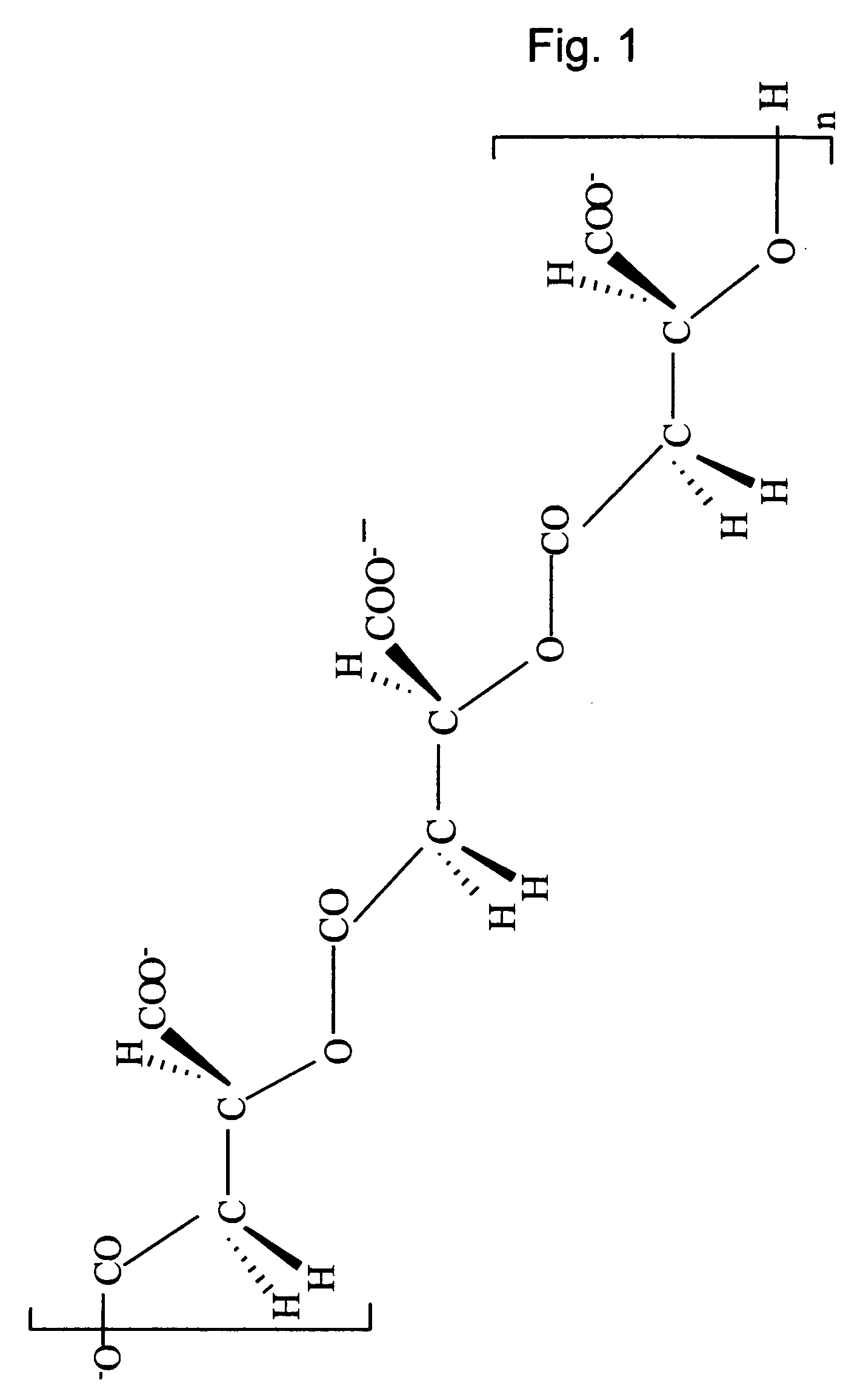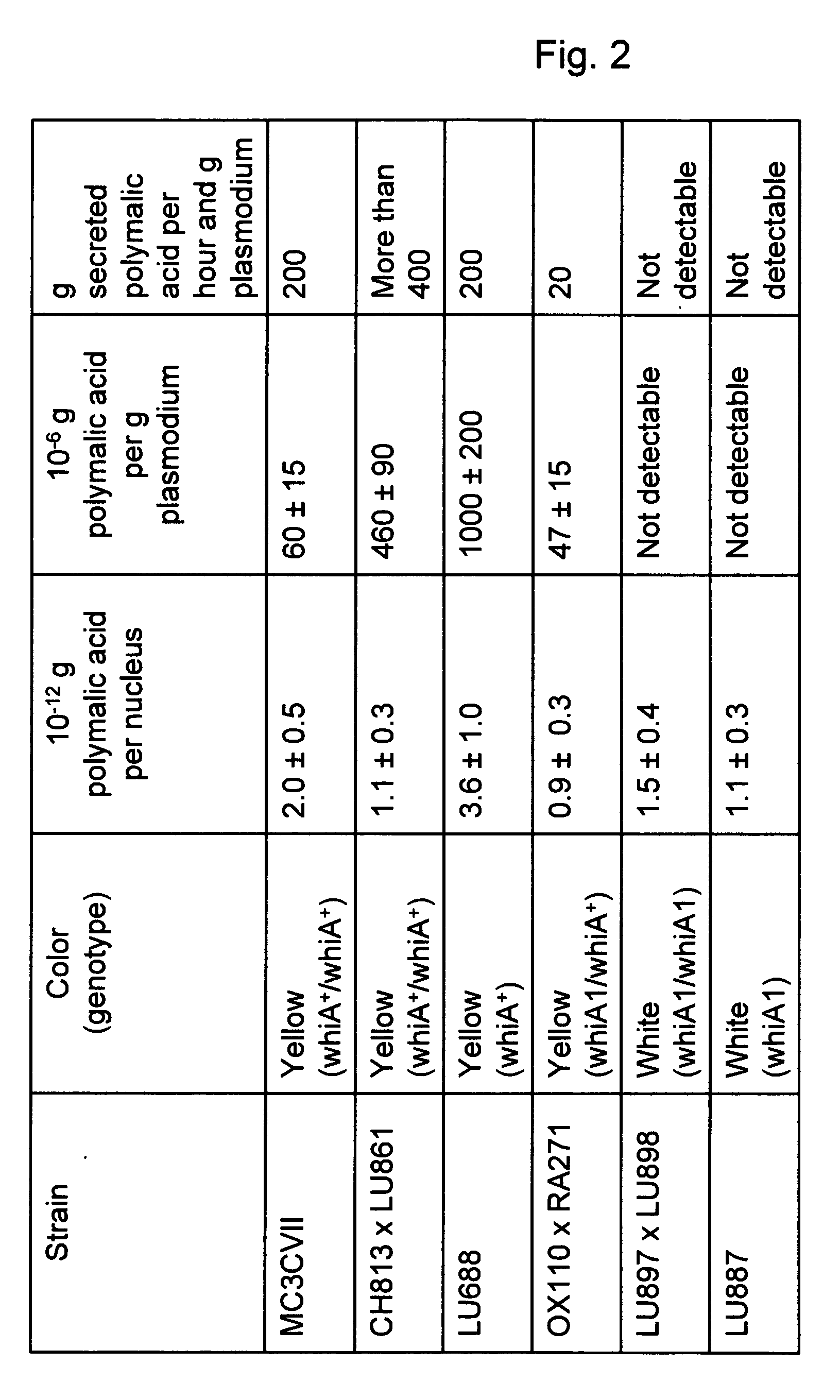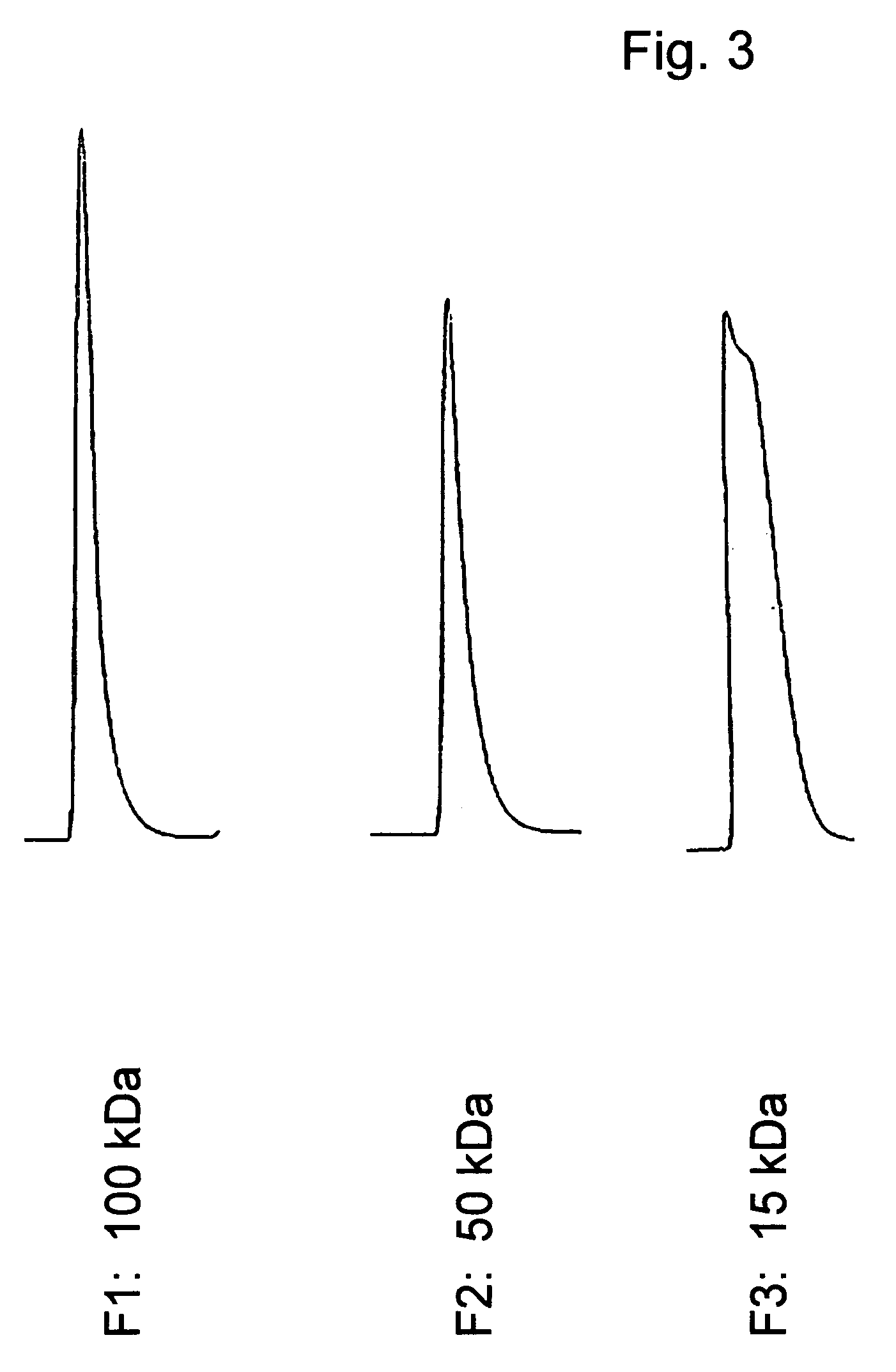Production of long chain unbranched beta-poly(L-malic acid) by large scale Physarum cultivation and high-grade purification of the same
a technology of long-chain unbranched beta-poly(l-malic acid) and physarum cultivation, which is applied in the field of fermentation microbiology, can solve the problems of partial racemisation, low purity of chemically synthesized pmla, and the inability to purify the kind of pmla preparation to chemical homogeneity, so as to reduce the spontaneous and enzymatic cleavage of produced pmla, reduce the effect of foam and avoiding contamination
- Summary
- Abstract
- Description
- Claims
- Application Information
AI Technical Summary
Benefits of technology
Problems solved by technology
Method used
Image
Examples
Embodiment Construction
[0063]The following description is provided to enable any person skilled in the art to make and use the invention and sets forth the best modes contemplated by the inventor of carrying out his invention. Various modifications, however, will remain readily apparent to those skilled in the art, since the general principles of the present invention have been defined herein specifically to provide an improved method to produce and isolate polymalic acid.
Polymalate Production in a Closed Stainless Steal 20-Liter Bioreactor
[0064]The following example of PMLA production is given for a 20-liter BIOSTAT® C Bioreactor from BRAUN BIOTECH INTERNATIONAL.
Inoculum:
[0065]1.5% (w / v) D-glucose[0066]1% (w / v) Bactotrypton (DIFCO, Germany)[0067]0.06% (w / v) CaCl2 [0068]0.15% (w / v) yeast extract (DIFCO)[0069]0.35 (w / v) citric acid monohydrate[0070]0.2% (w / v) KH2PO4 [0071]0.06% (w / v) MgSO4-heptahydrate[0072]0.085 g / liter MnCl2-tetrahydrate[0073]0.085g / liter FeSO4-hepthydrate[0074]0.035 g / liter ZnSO4-heptah...
PUM
| Property | Measurement | Unit |
|---|---|---|
| pKa | aaaaa | aaaaa |
| polydispersity | aaaaa | aaaaa |
| pH | aaaaa | aaaaa |
Abstract
Description
Claims
Application Information
 Login to View More
Login to View More - R&D
- Intellectual Property
- Life Sciences
- Materials
- Tech Scout
- Unparalleled Data Quality
- Higher Quality Content
- 60% Fewer Hallucinations
Browse by: Latest US Patents, China's latest patents, Technical Efficacy Thesaurus, Application Domain, Technology Topic, Popular Technical Reports.
© 2025 PatSnap. All rights reserved.Legal|Privacy policy|Modern Slavery Act Transparency Statement|Sitemap|About US| Contact US: help@patsnap.com



